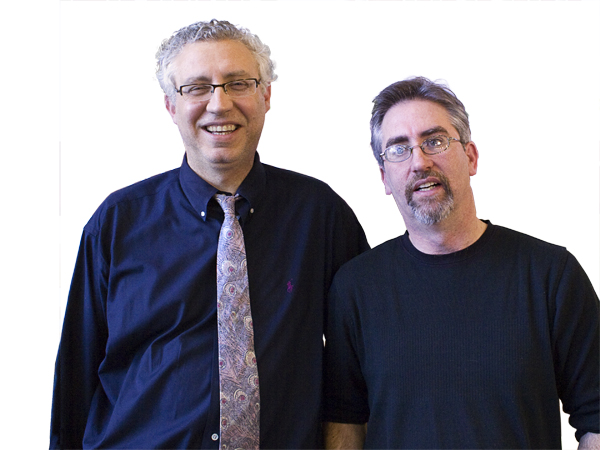 Philly U students learn the art and science of sustainable design
Philly U students learn the art and science of sustainable design
by Judy Weightman
Sometimes a random conversation with the person standing next to you in line leads to a new chapter in your life. That’s what happened to Rob Fleming and Chris Pastore, faculty members at Philadelphia University. “We were waiting to get our ID cards and started talking,” Pastore recalls. “It was immediately clear that we had to work together.”
That work takes place at the intersection of two different but complementary fields: Fleming is an architect with an interest in sustainable design and Pastore is a materials scientist who works with low-density composites and other green materials. Together, they started the Engineering and Design Institute (EDI) of Philadelphia University in 2000.
The institute’s goal is to help architects and engineers create structures with more thought to the environmental impact of the building in terms of its placement on the site, the materials used to build it and energy consumption over the life of the building. They do this in two main areas: design and materials.
They participate in the integrated design process known as charette (French for “little cart,” evoking the idea of people “tossing in” their contributions to the process). Charette is a form of brainstorming, a place where everyone with a stake in a building work together to sketch out solutions that they can all endorse. That includes not only the client, architect, engineer and builder, but also representatives of everyone who will be using the building, from the CEO down to the janitor, as well as the neighbors who will be affected by it. Fleming and Pastore serve as green advocates to ensure that issues like energy use are taken into account from the very earliest stages of the design process.
The other main task at EDI is testing new building materials, helping small companies by determining and quantifying the performance of materials made from renewable resources. For example, EDI is currently involved in testing the properties of chitosan, a polymer made from an extract of chitin, the hard substance in the shells of crustaceans. The advantage of chitosan is that it’s biodegradable—which is, of course, also a disadvantage when it comes to using it as a structural building material. To build with it, therefore, you need both something to make the chitosan wear- and weather-resistant for as long as several decades, and something that will counteract the hardening agent and set off triggered degradation of the material when its useful life is over. Further complicating things is the fact that these agents, like the chitosan, should be from renewable resources. EDI is currently two years into a three-year test of a hardener made with oxalic acid (from rhubarb) and a degradation trigger made with lysozyme (from egg whites).
The EDI emerged from the specific collaboration between Fleming and Pastore, but its roots are deep in long-established programs in architecture, engineering and materials science at Philadelphia University. The synthesis is coming to further fruition in a new program, the university’s M.S. in Sustainable Design. Begun in Fall 2007, the program “prepares students for leadership roles as we move from an industrial to an ecological model,” according to Fleming.
The program, which emphasizes interdisciplinary cooperation, attracts young professionals from a variety of disciplines, including architecture and design, engineering, construction and business. They tackle class projects in teams that are mixed up from one project to the next, so “they learn to work cooperatively and to respect what other disciplines can contribute,” Fleming says.
The process can be seen in Fall 2008’s Green Materials course, which focused on chairs. Students started by literally taking apart a typical office chair and quantifying the materials, down to measuring the thread and counting the bolts. They then did a life-cycle analysis, calculating the energy costs of creating and transporting it. Having determined the cost of a mass-produced chair (with all its economies of scale), three-person teams used found and recycled materials to build chairs at lower cost.
The process and results of the course exemplify the fundamental thrust of the program: the equal concern for sustainable materials and cutting-edge design. “We try to keep design in the science courses, and try to keep science in the design courses,” Pastore emphasizes.
This creative pair continues to find new ways to serve the community and get the sustainability message out. Their latest project is an online radio show entitled “Ecoman and the Skeptic.” (Fleming is the former and Pastore is the latter.) Streamed by the Green Talk Network, the show is, according to Pastore, “a dialectic approach to some of the more confusing issues surrounding sustainability. We don’t always agree, and we don’t always come to a conclusion, but that is reflective of the current situation.”
Each week, the pair discusses news items from around the world and separates fact from fiction in a quiz. The meat of the program, though, is an interview with a sustainability professional, who fields questions both from Fleming and Pastore, and from the audience, which submits questions via email and Facebook.


